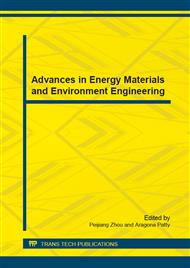p.152
p.156
p.161
p.170
p.175
p.181
p.185
p.189
p.193
Thermoeconomic Optimization for a Ferroelectric Stirling Refrigeration-Cycle
Abstract:
Using the finite-time thermodynamics, an irreversible cycle model of the Stirling refrigeration-cycle, using a ferroelectric material as the working substance, is established. Several irreversibilities due to thermal resistances between the working substance and the heat reservoirs, regenerative losses in two regenerative processes are taken into account. The influence of these irreversible losses on the performance of the ferroelectric Stirling refrigeration-cycleis analyzed. The thermoeconomic optimization for ferroelectric Stirling refrigeration-cycle is reported. The cooling load for the refrigerator per unit total cost is proposed as objective functions for the optimization. The optimum performance parameters which maximize the objective functions are investigated. Since the optimization technique consists of both investment and energy consumption costs, the obtained results are more general and realistic.
Info:
Periodical:
Pages:
175-178
Citation:
Online since:
December 2014
Authors:
Price:
Сopyright:
© 2015 Trans Tech Publications Ltd. All Rights Reserved
Share:
Citation:


